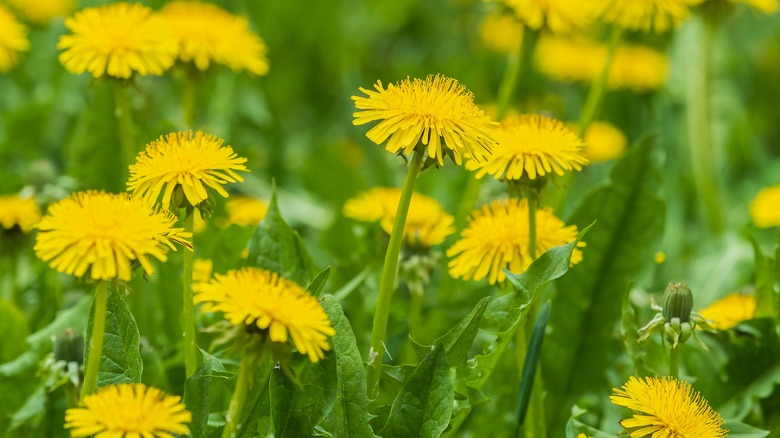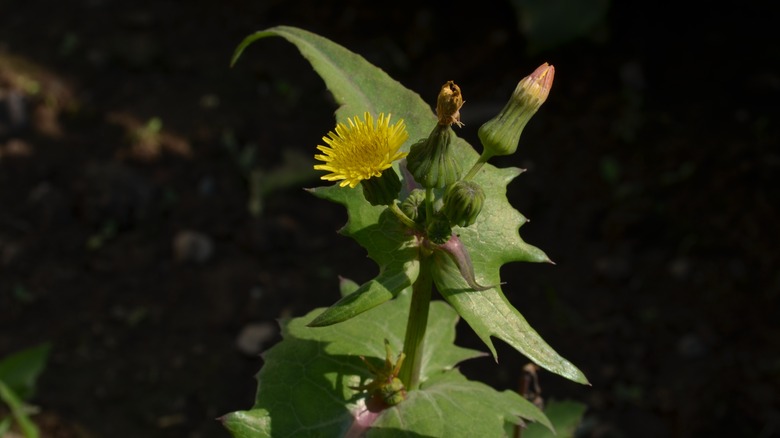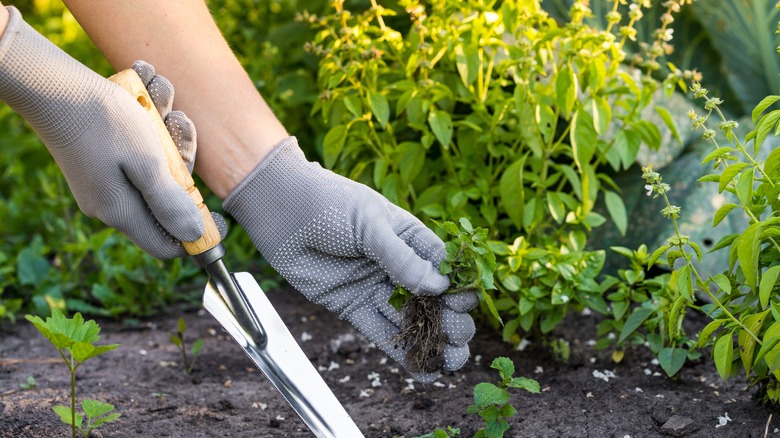The Dandelion Look-Alike That Should Be Removed From Your Lawn Immediately
While it's easy to just assume all yellow flowering weeds that produce fluffy white seed heads are dandelions, that's not the case. While dandelions can benefit lawns and gardens, thanks to their ability to improve compacted soil and act as bioaccumulators, some of their look-alikes are far less helpful. Annual sowthistle (Sonchus oleraceus), a surprisingly convincing dandelion imposter, is notorious for its ability to attract pests, including nematodes and multiple different types of aphids.
While both dandelions and annual sowthistle live in many of the same areas, with sowthistle thriving in USDA hardiness zones 6 through 9, and dandelions in zones 3 and higher, there are ways to tell the plants apart. While both dandelions and annual sowthistle have rosettes of toothed leaves at their base, sowthistle branches and grows far taller, often reaching heights of up to 4 feet. Sowthistle also has more flowers per plant and generally has smaller flowers and less rounded seed heads than dandelions. Additionally, sowthistle's leaves often have a purple tint. While dandelions are perennials, annual sowthistle, as its name implies, is an annual, living its entire life cycle in one year. Perhaps the biggest difference between dandelions and annual sowthistle, though, is how destructive sowthistle and the pests it attracts can be for your lawn and garden.
Why sowthistle should be removed from lawns and gardens
Annual sowthistle is a popular host plant for multiple kinds of aphids, including lettuce aphids, lettuce root aphids, and green peach aphids. Calling these insects destructive garden pests is putting it mildly. The damage lettuce root aphids do to lettuce plants can often be severe enough to kill the plants or prevent them from developing properly. Green peach aphids don't only attack peaches and other stone fruit, but also a wide variety of vegetables, including potatoes, members of the brassica family, and squashes. While lettuce aphids thankfully don't appear to be major vectors for disease, the same cannot be said for green peach aphids, which can be carriers of over 100 different kinds of plant viruses, including cucumber mosaic virus and potato virus Y.
Sowthistle doesn't just attract aphids to your garden, it is also a host species for nematodes. While some nematodes can be beneficial, this isn't the case with the ones attracted to sowthistle, which include root-knot nematodes and other damaging varieties. These microscopic roundworms can destroy gardens by eating away at plants' roots, often to the point where the plant withers and dies.
How to remove and prevent annual sowthistle infestations
Because annual sowthistle can produce thousands of seeds, it's important to remove the plants before they have a chance to reproduce. Unlike dandelions, annual sowthistle has only a shallow taproot, so it is generally easy to remove by hand or with a small spade. It also does not grow back from pieces of root, as dandelions can. Mowing can also be effective against sowthistle.
Annual sowthistle seeds generally stop being viable after a few years, so if you are diligent with removing plants before they can flower, you should begin to see a significant decrease in sowthistle within a handful of years at most. If you continue to have problems with annual sowthistle, they can be killed with both pre- and post-emergent herbicides, if necessary. You should always think twice before using weed killer though, and explore less environmentally-damaging options first.


